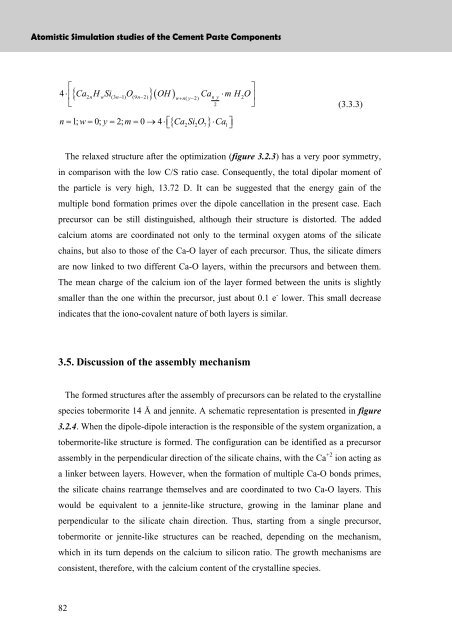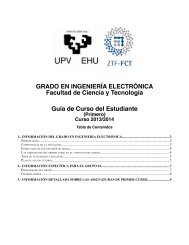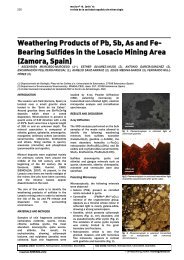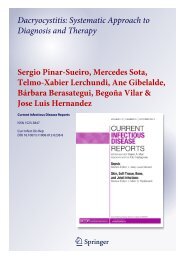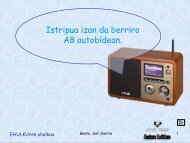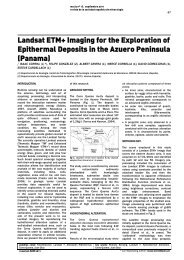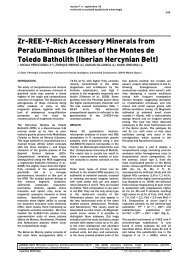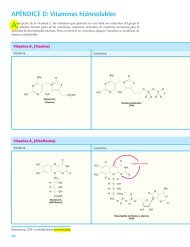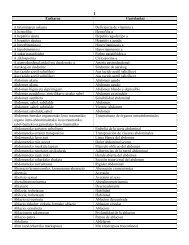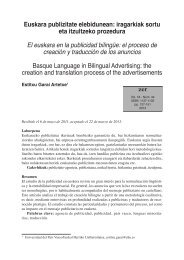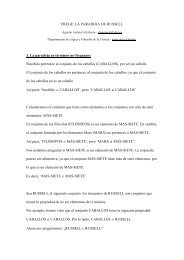Atomistic Simulation studies of the Cement Paste Components
Atomistic Simulation studies of the Cement Paste Components
Atomistic Simulation studies of the Cement Paste Components
You also want an ePaper? Increase the reach of your titles
YUMPU automatically turns print PDFs into web optimized ePapers that Google loves.
<strong>Atomistic</strong> <strong>Simulation</strong> <strong>studies</strong> <strong>of</strong> <strong>the</strong> <strong>Cement</strong> <strong>Paste</strong> <strong>Components</strong><br />
⎡<br />
4 ⋅⎢<br />
⎣<br />
⎤<br />
Ca2 nH wSi(3n−1) O(9n− 2)<br />
OH Ca ⋅<br />
w+ n( y−2)<br />
n y<br />
m H<br />
2O⎥<br />
2 ⎦<br />
{ }( )<br />
{ }<br />
n= 1; w= 0; y = 2; m= 0 →4⋅⎡⎣<br />
Ca2Si2O7 ⋅Ca1⎤⎦<br />
(3.3.3)<br />
The relaxed structure after <strong>the</strong> optimization (figure 3.2.3) has a very poor symmetry,<br />
in comparison with <strong>the</strong> low C/S ratio case. Consequently, <strong>the</strong> total dipolar moment <strong>of</strong><br />
<strong>the</strong> particle is very high, 13.72 D. It can be suggested that <strong>the</strong> energy gain <strong>of</strong> <strong>the</strong><br />
multiple bond formation primes over <strong>the</strong> dipole cancellation in <strong>the</strong> present case. Each<br />
precursor can be still distinguished, although <strong>the</strong>ir structure is distorted. The added<br />
calcium atoms are coordinated not only to <strong>the</strong> terminal oxygen atoms <strong>of</strong> <strong>the</strong> silicate<br />
chains, but also to those <strong>of</strong> <strong>the</strong> Ca-O layer <strong>of</strong> each precursor. Thus, <strong>the</strong> silicate dimers<br />
are now linked to two different Ca-O layers, within <strong>the</strong> precursors and between <strong>the</strong>m.<br />
The mean charge <strong>of</strong> <strong>the</strong> calcium ion <strong>of</strong> <strong>the</strong> layer formed between <strong>the</strong> units is slightly<br />
smaller than <strong>the</strong> one within <strong>the</strong> precursor, just about 0.1 e - lower. This small decrease<br />
indicates that <strong>the</strong> iono-covalent nature <strong>of</strong> both layers is similar.<br />
3.5. Discussion <strong>of</strong> <strong>the</strong> assembly mechanism<br />
The formed structures after <strong>the</strong> assembly <strong>of</strong> precursors can be related to <strong>the</strong> crystalline<br />
species tobermorite 14 Å and jennite. A schematic representation is presented in figure<br />
3.2.4. When <strong>the</strong> dipole-dipole interaction is <strong>the</strong> responsible <strong>of</strong> <strong>the</strong> system organization, a<br />
tobermorite-like structure is formed. The configuration can be identified as a precursor<br />
assembly in <strong>the</strong> perpendicular direction <strong>of</strong> <strong>the</strong> silicate chains, with <strong>the</strong> Ca +2 ion acting as<br />
a linker between layers. However, when <strong>the</strong> formation <strong>of</strong> multiple Ca-O bonds primes,<br />
<strong>the</strong> silicate chains rearrange <strong>the</strong>mselves and are coordinated to two Ca-O layers. This<br />
would be equivalent to a jennite-like structure, growing in <strong>the</strong> laminar plane and<br />
perpendicular to <strong>the</strong> silicate chain direction. Thus, starting from a single precursor,<br />
tobermorite or jennite-like structures can be reached, depending on <strong>the</strong> mechanism,<br />
which in its turn depends on <strong>the</strong> calcium to silicon ratio. The growth mechanisms are<br />
consistent, <strong>the</strong>refore, with <strong>the</strong> calcium content <strong>of</strong> <strong>the</strong> crystalline species.<br />
82


